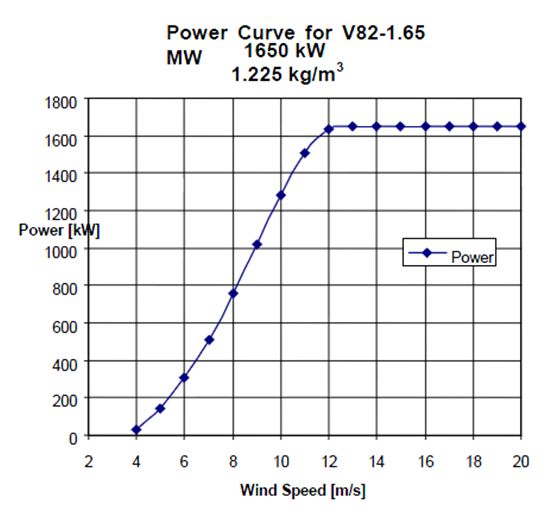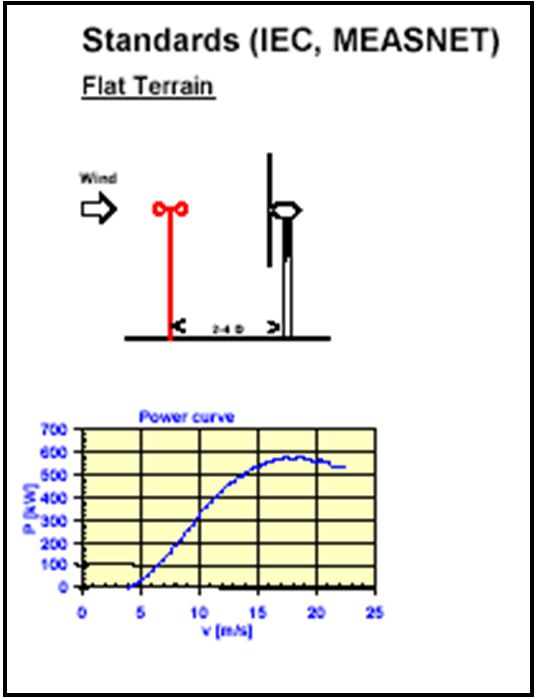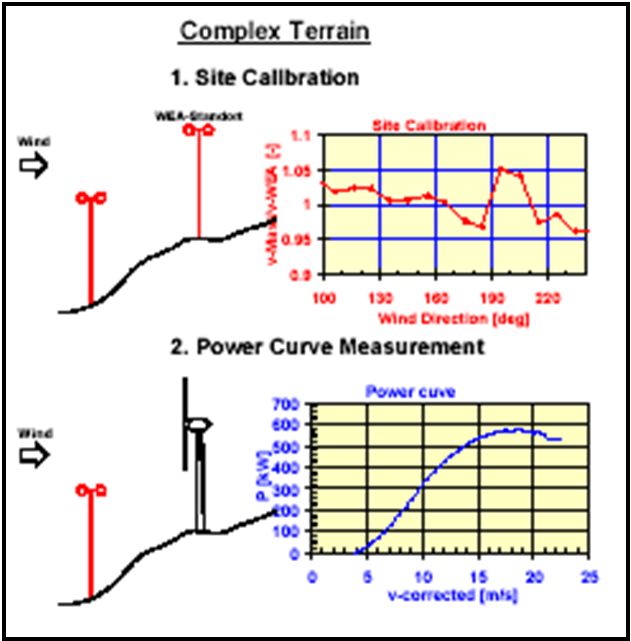A power curve is a relationship between free wind speed at the WT location and the associated expected power being produced. Power curve warranties are often included in contracts, to assure the wind turbine performs according to specification.
Here you have an example of how it looks like:
It is measured following international standards to demonstrate compliance with warranted values.
Following a standard not only reduces variance due to data analysis, but it also provides solutions to different problems, for example:
- How to judge if an anemometer is good enough.
- How to deal with complex terrain and obstacles.
- How to correct for low air pressure.
- How to measure the production and with which devices.
Basically, it provides an accepted way of estimating the result’s uncertainty. Any deviations from the standard (in procedure or interpretation) will cause severe deviations and uncertainties that will make conclusions very hard to take.
The standards in use to measure the power curves are made by the International Electromechanical Commission (IEC):
IEC 61400-12, in use since 1998, has been replaced by IEC 61400-12-1 (December 2005), which includes MEASNET requirements and has additional requirements for anemometer.
The following version is IEC 61400-12-2, addressing nacelle anemometry.
IEC 61400-12-1 without site calibration is the method used on flat terrain.
Basically, a meteorological tower (met mast) is positioned near a turbine to measure the wind, and a uniform flow at mast and turbine is assumed. The normal uncertainty is 5-8 %, depending on annual wind.
The best position for the mast is in the middle of sector, and it has to be between 2 and 4 diameters in front of the turbine (for instance for a V90 it would be between 180 and 360 meters). It is often erected at a 2.5 diameters distance.
The met mast can be erected before or after turbines are on site.
IEC 61400-12-1 with site calibration is the method used on complex terrain.
In this case, a temporary met mast is placed in the future position of the selected turbine, and at the same time the wind farm definitive met mast is erected.
The 2 masts works together for a certain amount of time, until a relationship between the wind measured by the definitive met mast and the temporary met mast can be found.
After, the temporary met mast is disassembled, the WTG is erected in his position and it can be defined if the energy produced is in line with the expected generation with the wind speed (extrapolated using the data of the wind farm met mast and the previously defined correlation).



Leave a Reply